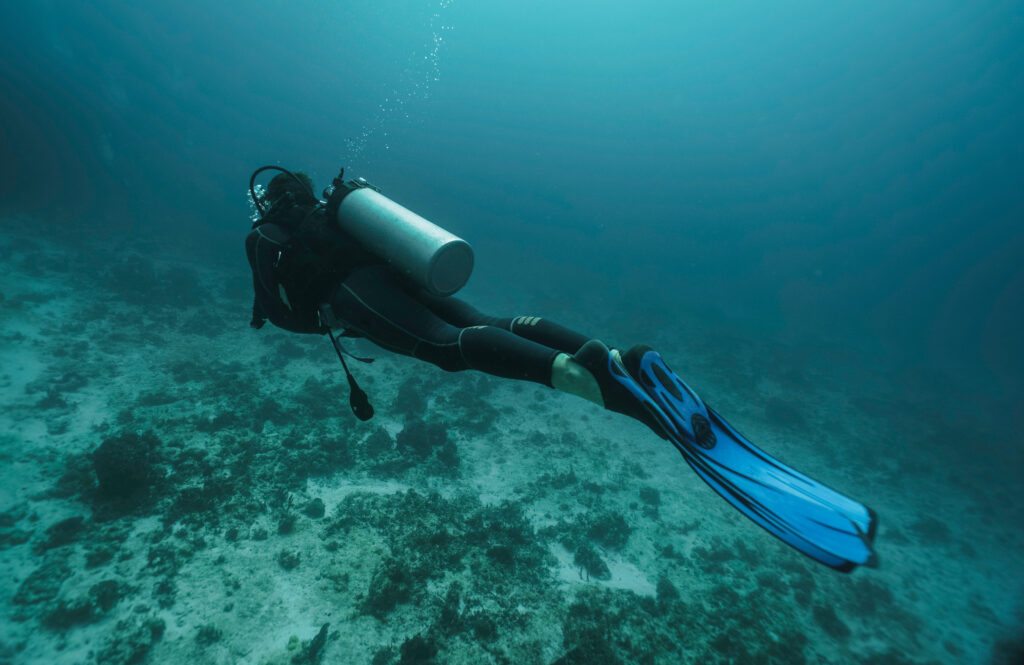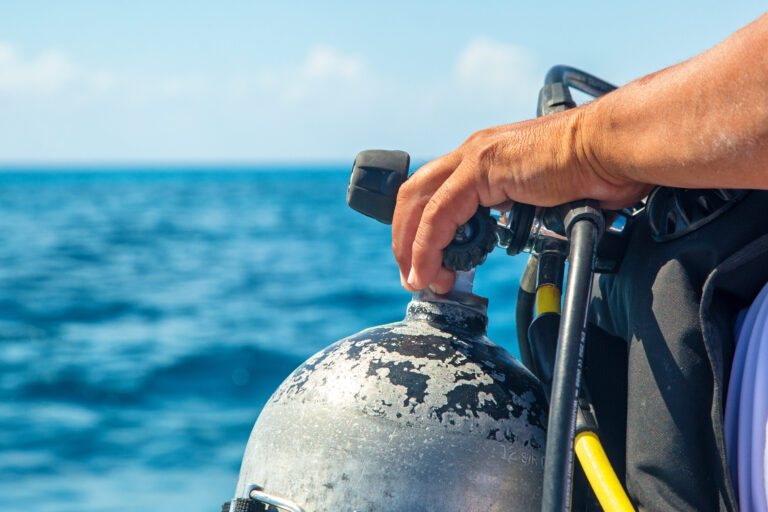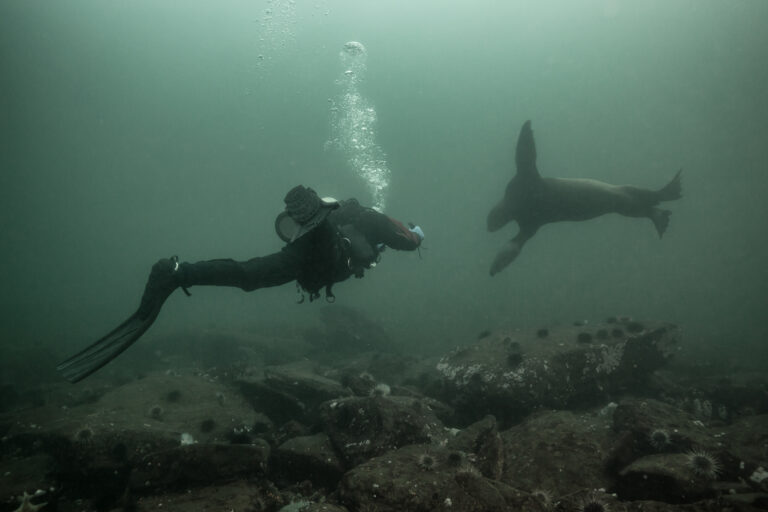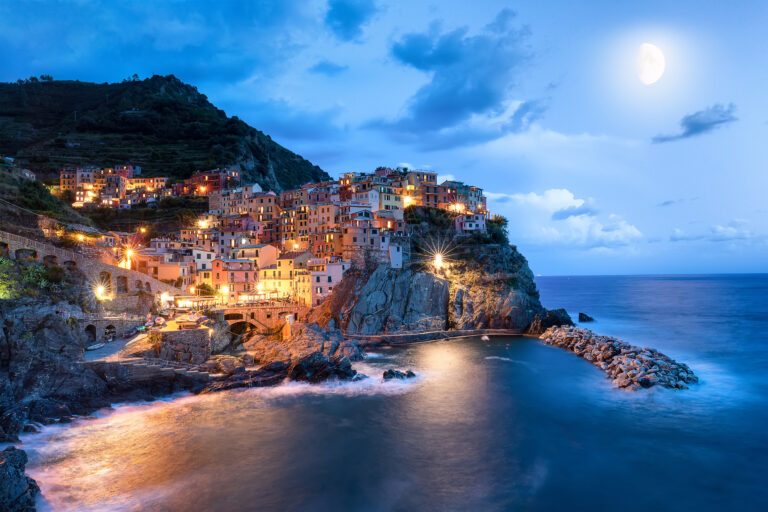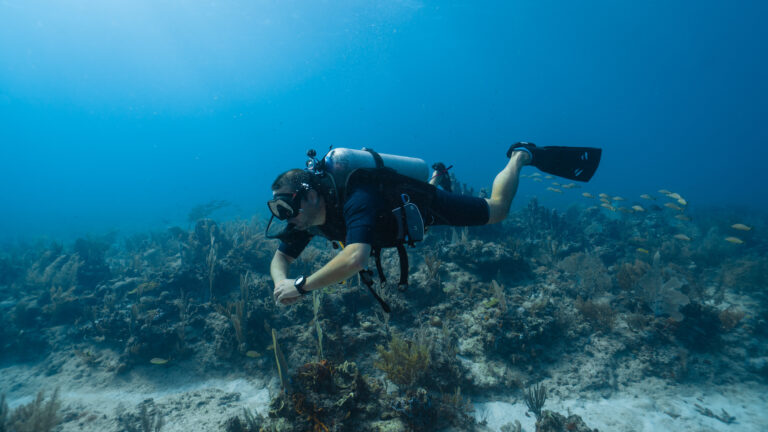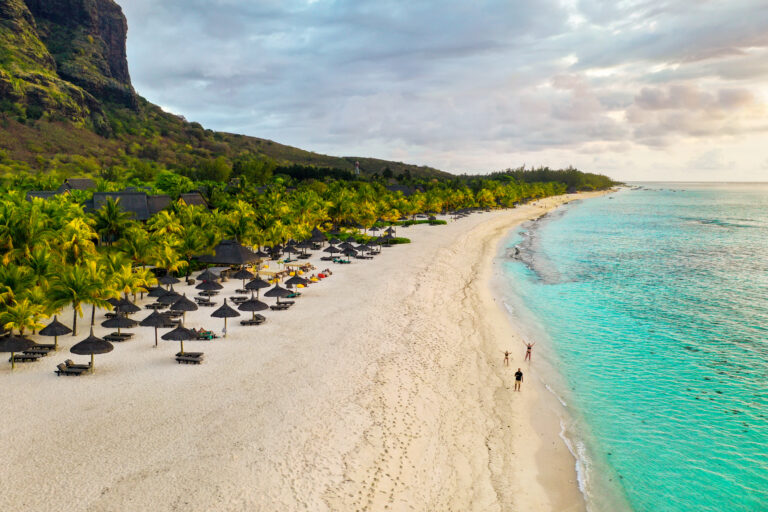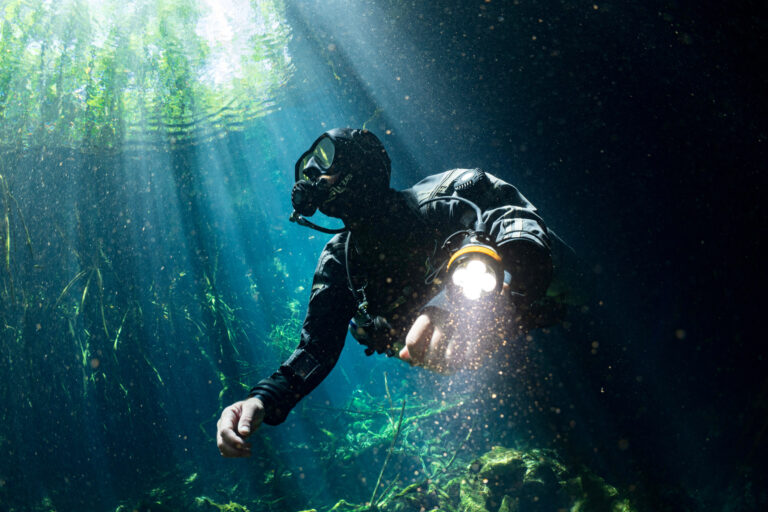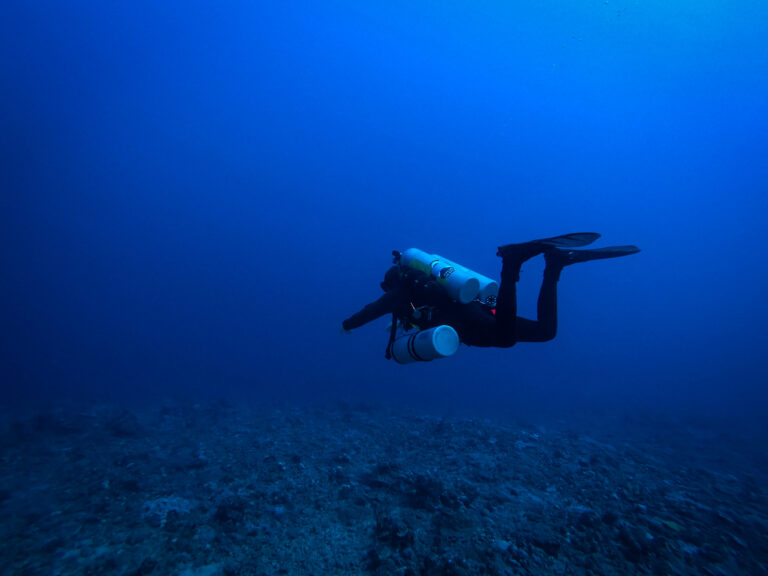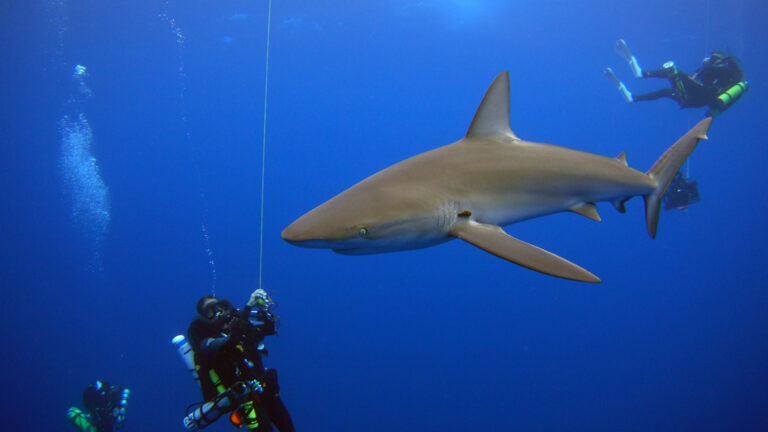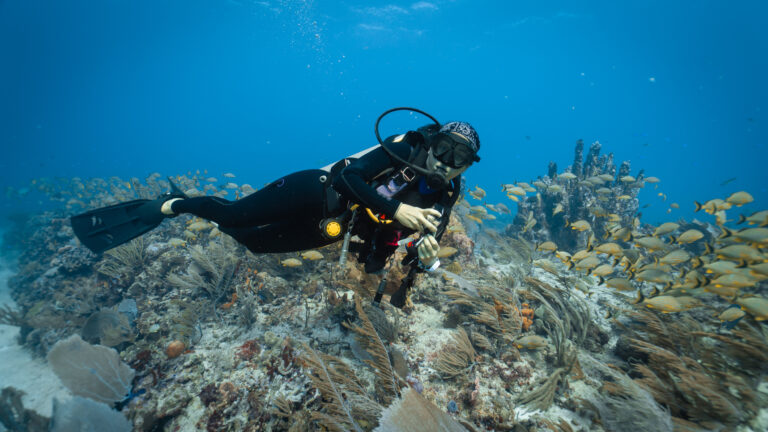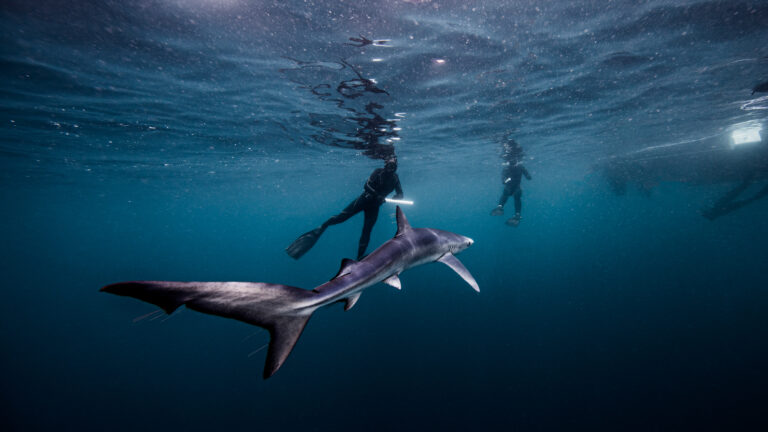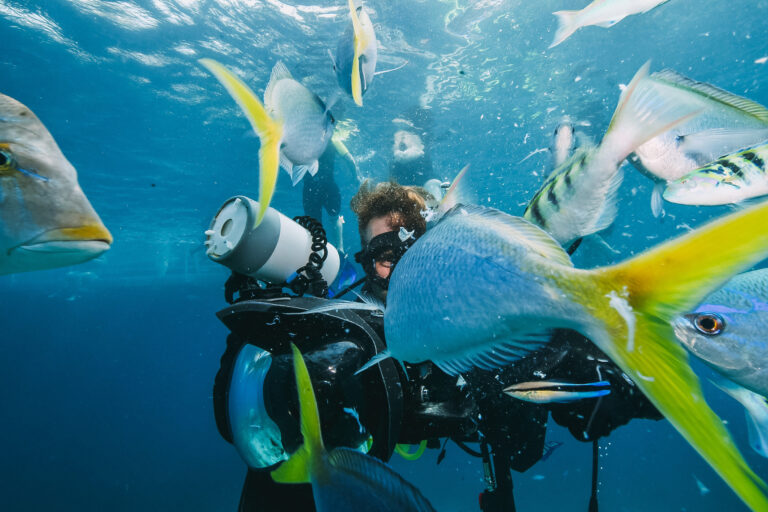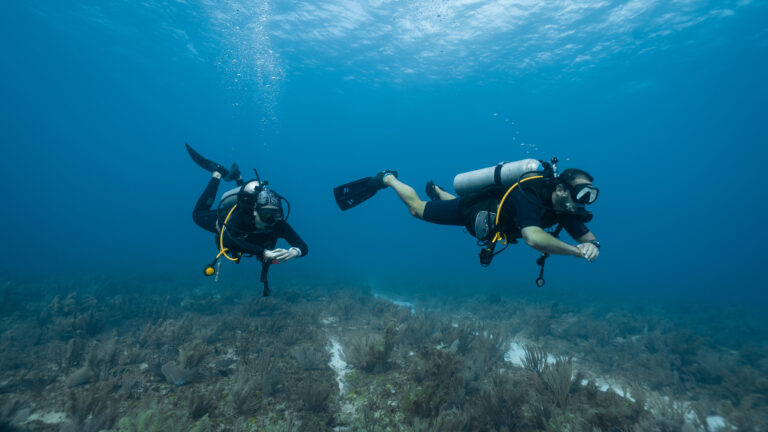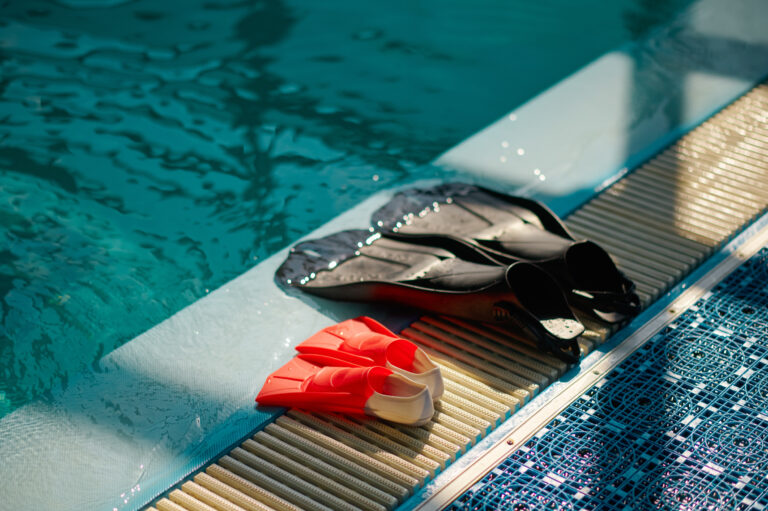Scuba Divers’ Travel Guide to Easter Island
Easter Island, or Rapa Nui, located in the southeastern Pacific Ocean, offers a unique and intriguing scuba diving experience. The island’s volcanic origins have created an underwater landscape of dramatic rock formations and coral reefs. The clear, warm waters provide excellent visibility, allowing divers to explore the rich marine life and underwater archaeological sites. Easter Island’s remote location and cultural heritage add an extra layer of fascination for scuba travelers. For those seeking an extraordinary diving adventure, Easter Island’s underwater world offers a captivating and one-of-a-kind experience.
Location and Geography
Easter Island, known locally as Rapa Nui, is a remote volcanic island situated in the southeastern Pacific Ocean, at the southeasternmost point of the Polynesian Triangle. This UNESCO World Heritage site is famed for its 887 monumental statues, called moai, created by the early Rapanui people. Geographically, it is one of the world’s most isolated inhabited islands, located about 3,600 kilometers west of continental Chile and 2,075 kilometers east of Pitcairn Island. The island’s triangular shape is the result of the convergence of three volcanic cones, namely Terevaka, Poike, and Rano Kau, with Terevaka being the highest at 507 meters. Its remote location, combined with the unique underwater visibility, makes Easter Island an exceptional scuba diving destination. Divers are drawn not only by the island’s intriguing history and surface beauty but also by its underwater topography, which includes volcanic caves, coral reefs, and a variety of marine life, making it a truly unique spot for exploration beneath the waves.
Visa and Entry Requirements
Travelers planning to explore the underwater marvels of Easter Island, a remote volcanic island famed for its intriguing moai statues and pristine diving spots, should be aware of the visa and entry requirements. As part of Chile, Easter Island follows Chilean visa policies. Visitors from most countries in the Americas and Europe do not require a visa for stays of up to 90 days; however, it’s essential to check the latest requirements based on your nationality. Upon arrival, all tourists must fill out a Tourist Card, which allows a stay of up to 30 days on the island. This card should be retained, as you’ll need to present it upon departure. Additionally, due to the island’s unique ecological and cultural significance, the Chilean government has implemented measures to protect its fragile environment and heritage. As of my last update, visitors may be asked to show proof of accommodation and a return ticket. Given the island’s remote location, ensuring compliance with these entry requirements is crucial for a smooth and unforgettable diving adventure in this mystical part of the Pacific.
Getting to Easter Island
Getting to Easter Island, a remote volcanic island in the southeastern Pacific Ocean, is an adventure in itself, primarily due to its isolated location. The most common and practical way to reach this scuba diving paradise is by air. Mataveri International Airport, located near the island’s only town of Hanga Roa, serves as the gateway for travelers. Direct flights are available from Santiago, Chile, which take approximately six hours, with LATAM Airlines being the primary carrier offering this route. Although options are limited due to the island’s remoteness, planning your trip well in advance can ensure a smoother journey. Once you arrive, the unique underwater landscapes, including moai statues and vibrant marine life, make every moment of the travel worth it. Remember to check for any travel restrictions or requirements, as they can change, ensuring your diving adventure starts off without a hitch.
Best Time to Dive
Getting to Easter Island, a remote volcanic island in the southeastern Pacific Ocean, is an adventure in itself, primarily due to its isolated location. The most common and practical way to reach this scuba diving paradise is by air. Mataveri International Airport, located near the island’s only town of Hanga Roa, serves as the gateway for travelers. Direct flights are available from Santiago, Chile, which take approximately six hours, with LATAM Airlines being the primary carrier offering this route. Although options are limited due to the island’s remoteness, planning your trip well in advance can ensure a smoother journey. Once you arrive, the unique underwater landscapes, including moai statues and vibrant marine life, make every moment of the travel worth it. Remember to check for any travel restrictions or requirements, as they can change, ensuring your diving adventure starts off without a hitch.
Accommodation Options
Easter Island, a remote volcanic island in the southeastern Pacific Ocean, renowned for its underwater marvels as much as its mysterious moai statues, offers a range of accommodation options tailored to suit the needs of scuba divers. From cozy guesthouses and eco-lodges that reflect the island’s commitment to sustainability, to more luxurious hotels with dive packages and gear rental services, there’s something for every level of comfort and budget. Many accommodations are conveniently located in Hanga Roa, the island’s main town, providing easy access to dive shops, briefing centers, and the island’s small but bustling dining scene. Some properties offer special services for divers, such as equipment drying areas and early breakfast options, ensuring that enthusiasts can maximize their time exploring the island’s unique underwater landscapes. Whether you’re looking for a simple base to rest between dives or a more indulgent retreat to relax and enjoy the island’s terrestrial beauty, Easter Island’s accommodations cater to the diverse needs of the global diving community.
Dive Operators and Dive Shops
Easter Island, a remote volcanic island in the southeastern Pacific Ocean, is not only famous for its enigmatic moai statues but also as a unique scuba diving destination. The dive operators and shops on Easter Island cater to a niche but enthusiastic group of divers, offering personalized experiences that highlight the island’s underwater treasures. With a limited number of operators, the emphasis is on quality and sustainability, ensuring that the fragile marine ecosystem is preserved for future generations. Divers can expect intimate, guided tours that reveal the island’s clear waters, underwater volcanic formations, and a surprising variety of marine life, including several endemic species. The dive shops, often run by locals or long-term residents, are well-equipped and provide certifications, gear rental, and insider knowledge on the best dive sites, such as the submerged moai at Hanga Roa Bay. Whether you’re a novice looking to get certified in a unique location or an experienced diver seeking new adventures, Easter Island’s dive operators offer an unforgettable underwater experience in one of the world’s most isolated and mystical destinations.
Transportation within Easter Island
Transportation within Easter Island, known locally as Rapa Nui, offers a quaint yet efficient way to navigate this remote and mystical destination, making it accessible for scuba divers eager to explore its underwater marvels. Given the island’s compact size, the primary mode of transportation for visitors is rental cars, which can be easily arranged at Mataveri International Airport or through various rental agencies in Hanga Roa, the island’s sole town. For those preferring not to drive, there are a handful of taxi services and several tour operators offering guided tours that include scuba diving excursions to the island’s renowned dive sites, such as Motu Nui and Orongo. Bicycles are also available for rent, offering a more eco-friendly and leisurely option to soak in the island’s breathtaking landscapes. Despite its remote location, Easter Island’s straightforward transportation options ensure that the stunning underwater ecosystems and moai statues submerged beneath the Pacific’s waves are within easy reach for every diving enthusiast.
Currency and Payment Methods
When planning your scuba diving adventure to Easter Island, it’s essential to be prepared with the right currency and payment methods to ensure a smooth experience. The official currency of Easter Island, which is a special territory of Chile, is the Chilean Peso (CLP). While major hotels and some dive shops may accept credit cards, particularly Visa and MasterCard, it’s advisable to carry cash for smaller establishments, local markets, and in case of credit card terminal malfunctions. ATMs are available in Hanga Roa, the island’s main town, but they can sometimes run out of money, especially during peak tourist seasons or on weekends, so withdrawing sufficient cash upon arrival is wise. Additionally, considering the remote location of Easter Island, it’s prudent to inform your bank of your travel plans to avoid any issues with card transactions. By ensuring you have a mix of payment methods and being mindful of the local currency, your focus can remain on the breathtaking underwater experiences that await.
Language and Communication
When embarking on a scuba diving adventure to Easter Island, also known by its indigenous name Rapa Nui, understanding the nuances of language and communication is essential for a seamless experience. Spanish is the official language, widely spoken and understood, given the island’s status as a Chilean territory. However, the local Polynesian language, Rapa Nui, is also spoken among the islanders, adding a rich cultural layer to your visit. While diving instructors and tour operators typically speak English, especially those catering to international tourists, learning a few basic phrases in Spanish can greatly enhance your interactions with local residents and service providers. Communication underwater follows the universal language of dive signals, but clarifying these with your dive guide beforehand is always a good practice. Embracing the local languages and customs not only enriches your diving trip but also fosters a deeper connection with the mystical and captivating Easter Island.
Local Culture and Attractions
Easter Island, known locally as Rapa Nui, offers a unique blend of breathtaking underwater adventures and a rich cultural tapestry that is as mysterious as it is captivating. Above the surface, the island is world-renowned for its enigmatic moai statues, enormous stone figures carved by the Rapa Nui people centuries ago, which dot the landscape and provide a fascinating glimpse into the island’s past. Visitors can explore the Rano Raraku quarry, where many of these statues were carved, or visit Ahu Tongariki, the largest ahu (ceremonial platform) on the island, showcasing 15 standing moai. The local culture is a vibrant mix of Polynesian roots and the unique identity that has evolved on this remote island, with traditional music, dance, and crafts offering a colorful insight into the Rapa Nui way of life. Beyond the historical and cultural attractions, the island’s volcanic craters, such as Rano Kau, and pristine beaches, like Anakena, offer stunning natural beauty and tranquility, making Easter Island not just a scuba diver’s paradise, but a comprehensive destination for those seeking to immerse themselves in a place where history, culture, and natural wonders converge.
Cultural Etiquette and Tips
When planning a scuba diving trip to Easter Island, also known by its indigenous name Rapa Nui, it’s essential to approach the island’s unique culture with respect and mindfulness. The Rapa Nui people, who have lived on the island for centuries, hold their traditions and the environment in high regard. As a visitor, always show respect for the local customs and the sacred sites, including the iconic moai statues, by not touching or climbing on them. It’s also good practice to engage with the local community in a respectful manner, such as greeting people with a friendly “Iorana” (hello) and saying “Maururu” (thank you) to express gratitude. When diving, be conscious of the fragile marine ecosystem and adhere to eco-friendly diving practices to minimize your impact on the underwater environment. Remember, taking anything from the sea, including corals or shells, is frowned upon and can be illegal. By following these guidelines, you’ll not only enjoy the breathtaking underwater landscapes Easter Island has to offer but also contribute positively to the preservation of its cultural and natural heritage.
Local Laws and Regulations Relevant to Tourists
When planning a scuba diving adventure to Easter Island, also known as Rapa Nui, it’s crucial to familiarize yourself with the local laws and regulations to ensure a respectful and lawful experience. The island, renowned for its archaeological significance and unique marine biodiversity, is a protected area, and many of its underwater sites are considered sacred. Divers must obtain a permit from the local authorities before exploring these waters. It’s also important to dive with a certified, locally-operated dive center, as they are knowledgeable about the specific regulations that protect the island’s marine life and archaeological sites. Additionally, removing any artifacts or disturbing the seabed is strictly prohibited to preserve the integrity of the underwater cultural heritage. Respecting these regulations not only contributes to the conservation efforts of Easter Island’s unique ecosystem and historical sites but also ensures a more enriching diving experience.
Safety Tips and Emergency Contacts
When planning a scuba diving adventure to the enigmatic Easter Island, prioritizing safety is paramount to ensure an unforgettable underwater experience amidst its crystal-clear waters and unique marine life. Before embarking on your dive, familiarize yourself with the local dive operators who are well-versed in the area’s conditions and can provide essential safety briefings. It’s crucial to check that your equipment is in good working order and that you’re comfortable with its functionality. Given the remote location of Easter Island, medical facilities are limited, so ensure you have a comprehensive dive insurance that covers medical evacuation. The nearest decompression chamber is located in Tahiti, highlighting the importance of diving within your limits and adhering strictly to dive tables and computers to avoid decompression sickness. In case of an emergency, it’s vital to have the contact information for the local hospital (Hospital Hanga Roa) and to know the procedures for initiating a medical evacuation. Always dive with a buddy, maintain good buoyancy control, and conserve your air supply. By following these safety tips and being prepared for emergencies, your dive in the mystical waters of Easter Island will be both exhilarating and secure.
Health and Travel Insurance
When planning your scuba diving adventure to Easter Island, a remote and enchanting destination known for its mysterious Moai statues and pristine underwater landscapes, it’s crucial to prioritize your health and travel insurance. Given the island’s isolated location in the Pacific Ocean, far from mainland Chile, access to comprehensive medical facilities is limited. Therefore, securing a travel insurance policy that includes coverage for scuba diving activities and potential medical evacuation is essential. This ensures that in the unlikely event of a diving accident or health issue, you have the necessary support for emergency medical services, including transportation to a facility equipped to provide the required care. Additionally, considering the logistical challenges of reaching and leaving Easter Island, insurance that covers trip cancellations, interruptions, and delays can safeguard your investment in this once-in-a-lifetime journey. Always verify that your policy explicitly covers scuba diving, as some insurers may consider it an extreme sport and exclude it from standard policies.

